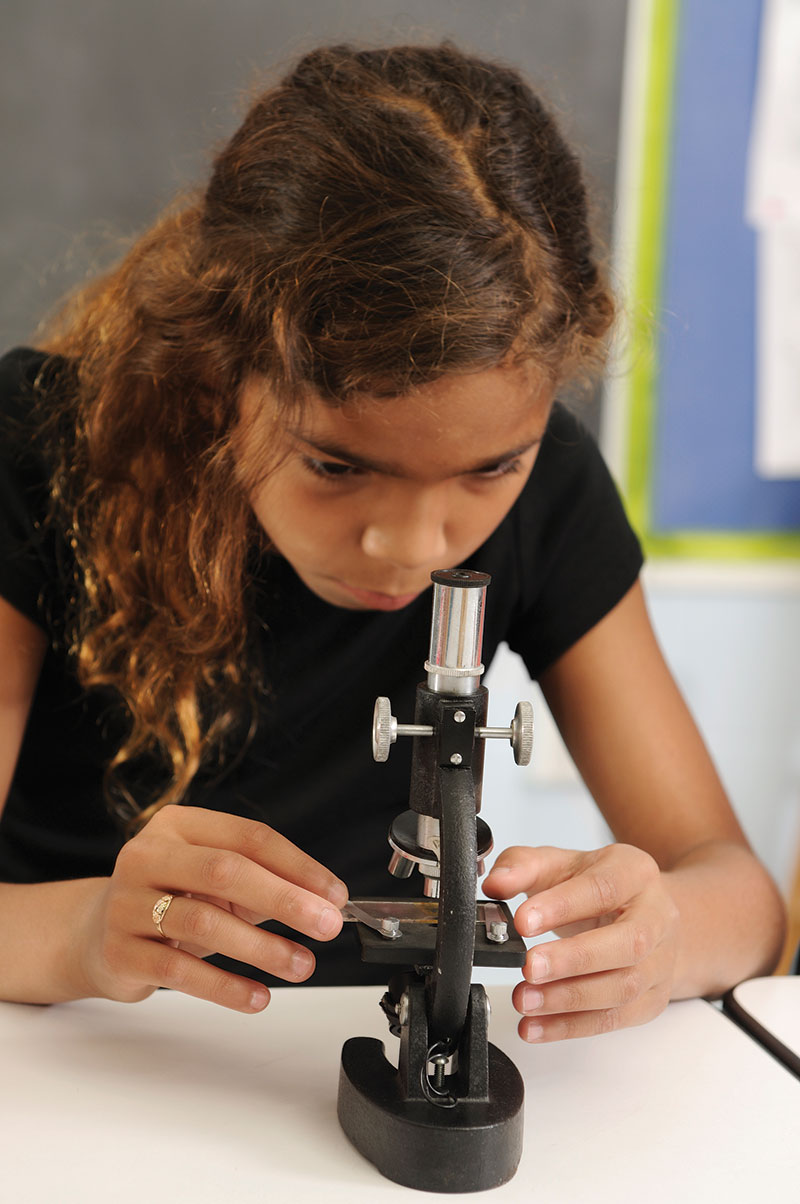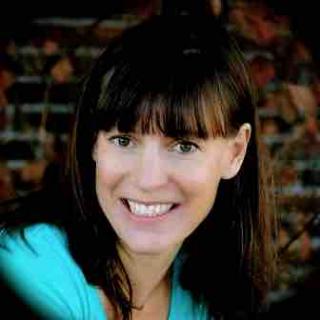 Spa days, social gatherings and BFFs are not the first thoughts that come to mind when discussing the professions of science, math, technology and engineering.
Spa days, social gatherings and BFFs are not the first thoughts that come to mind when discussing the professions of science, math, technology and engineering.
These fields, known collectively as STEM, sometimes conjure more masculine, maybe even tech-nerdy, images of pocket protectors and late nights in an isolated lab. That’s not exactly the kind of life a girl in middle school might dream of.
STEM has an image problem: Such stereotypes are causing women to shy away from these professions. But educators and advocates behind a new trend in mentorship and targeted programming are pushing to change that.
Numbers game
For girls, middle school is the time when career plans begin to form. During these preteen years, 74 percent of girls are still interested in the magic of science, still believe they are as good as boys in math and figure they can make a robotic Lego vehicle move by way of technical applications. That statistic, which comes from the organization Girls Who Code, also states that only .3 percent of girls go on to choose computer science as a major.
Unfortunately, somewhere after the stage of giggly slumber parties and before college applications, most girls lose interest in pursuing a career in one of the four STEM disciplines.
Statistics from numerous organizations dedicated to fighting the trend all ultimately point to these problems:
1. Women make up roughly half the workforce, but only about 26 percent of STEM jobs are held by women.
2. Job growth in the STEM sector is so fast that there are not enough qualified workers to fill such positions.
3. Salaries in these fields are more equitable but still not equal. Typically, women earn about 92 cents per dollar to their male counterparts in STEM positions. The rest of the female workers in other industries earn an average of 77 cents for every dollar earned by men.
So, what are the solutions? Bolstering a girl’s confidence in math and science? Introducing her to STEM field mentors with whom she can identify? Changing the STEM field culture to include more women? Getting preteens hooked early? Personally inviting girls to sign up for STEM-related classes?
The answer lies in a mix of all of the above, experts say. Adding women to the STEM workforce has become a national effort, with branches that reach into the local education systems.
Mentorship moves
Million Women Mentors, a New York–based organization, connects mentors to young girls interested in these fields. Julie Kantor, director of Million Women Mentors, explains that the goal is to “move the needle” of young girls pursuing STEM careers.
Kantor and her organization are trying to change the image of the STEM workforce by demonstrating through mentorship that STEM careers do have a supportive feminine side. Kantor, who felt isolated while working in a STEM job and credits a weekly lunch date with female coworkers with getting her through it, says there is a need for other women in STEM, so that the females who are in those fields don’t feel so isolated.
Patti Hearn, the head of school at Seattle-based Lake Washington Girls Middle School, backs this push for mentors. She sees her students connect and identify with the school’s “enthusiastic” female science and math teachers.
“I think mentorship is especially important in math and science,” Hearn says. “If there is a critical mass of women, there is a feeling of membership, the idea that ‘I’m supposed to be here.’ It’s that feeling of community identity.”

The important thing is to provide role models in which young girls see themselves reflected, Hearn says.
Joy Giovanini, curriculum facilitator for career and college readiness at the Peninsula School District in Gig Harbor, is also helping to expose young girls to mentors in math and sciences.
This spring, Giovanini and the Peninsula School District will host an all-girl STEM class and career workshop for 150 middle schoolers. It’s called Career and Pathway Expo, or CAPE. Though some of the classes will be run by men, Giovanini will put an emphasis on female mentors with whom the attendees can identify. Her hope is to break down the fields’ stereotype of being dominated by males.
“It gives the girls an opportunity to see people like themselves in these fields,” she says.
Greg Bianchi, STEM curriculum coordinator for the Bellevue School District, says that mentors don’t necessarily have to be in the STEM field to have an impact on a girl.
“Female adults, regardless of professional experience, can have a strong impact if they convey enthusiasm and are willing to learn robotics or coding alongside students,” he says. “In doing so, they model the mindset.”
Personal invitations are another way Giovanini, a former middle school robotics teacher, nudges young girls down these paths.
When she was in the classroom, she noticed that a girl was more likely to sign up for a male-dominated robotics class if she or another teacher personally asked her.
“And she would often bring friends,” Giovanini says.
As a result, 20 percent of the Peninsula School District’s robotics students are female, about one-third more than before invitations were used.
Boosting confidence
Perhaps one of the reasons personal invitations are important is that girls lack confidence in these fields.
Linda Ott, a professor of computer science at Michigan Technological University in Houghton, Michigan, agrees.
“I can’t tell you how many times I’ve heard a female student say, ‘But I only got a B-plus’ or even, ‘But it wasn’t a strong A,’” Ott says. “When girls are invited by a teacher to join a technology-related class or pursue a technology-related activity, it gives them the message that they really can do it.”
This, Ott says, is where the mentors come in.
“It’s hard for a girl to pursue a career in fields like computing when they haven’t seen anyone else who looks like them in the field.”
One of the solutions may also be a matter of timing, says Joanie Block, the founder and director of Kids In Medicine, a Seattle Science Foundation program.
“Middle school is when we want to hook them,” she says. Kids in Medicine works to “expose” elementary school children, “hook” the middle schoolers and “mentor” the high schoolers.
Classes like forensics really interest the middle schoolers, Block says.
Block also notes that classes geared to “girls only” allow them to “check their cool card at the door.”
Giving girls the opportunity to thrive among other girls is a key to success in these fields. “Everyone around them is a girl, and it’s cool to be smart,” Hearn says.
The approach to STEM at Lake Washington Girls Middle School has been successful. About 50 percent of the school’s alumnae go on to study advanced math and science in high school and college, Hearn says.
That’s well above the average number of women in those fields.
The school’s success in this area may prove that bringing women together with female mentors, building STEM confidence in girls, and exposing them to the thrilling and lucrative careers available in STEM may be the answer to ending the dearth of women in these field.











